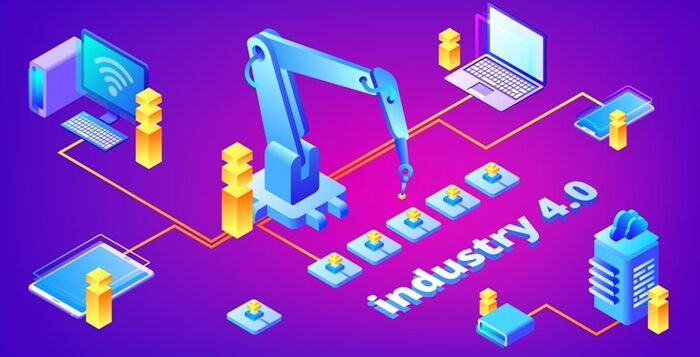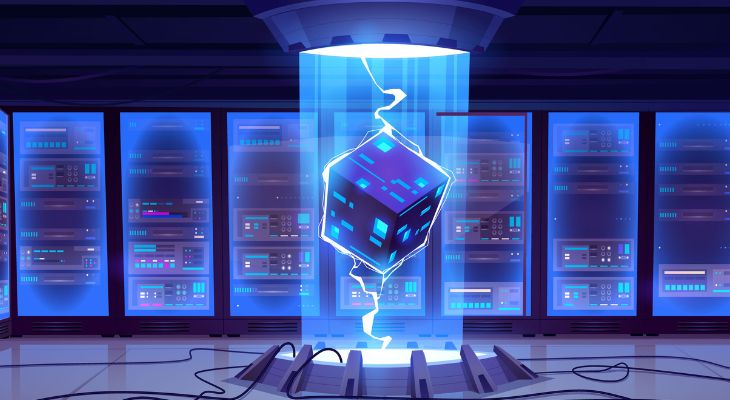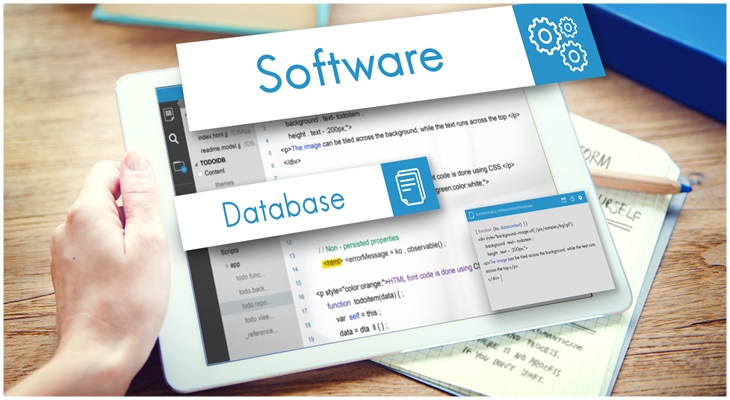What is Industry 4.0?
Like the industrial revolutions that came before, Industry 4.0 is the new Industrial Revolution. Industry 4.0 is going to be as impactful as previous revolutions, if not more.
The first industrial revolution brought the emergence of mechanization, steam engine, and weaving loom.It started in the 1700s. This completely changed the way of transportation and commerce. Industry 4.0 focuses on the integration of disparate technologies to work together.
The second revolution took place in the 20th century.This revolution gave birth to mass production, electrical energy, and assembly lines. Industry 2.0 brought great changes to the way production took place. It increased the production output to a great extent.
The invention of electronics and computers gave rise to automation. This caused the third Industrial Revolution, Industry 3.0.
Now, we have entered the fourth Industrial Revolution.
Industry 4.0 is bringing the evolution of digital technologies and advanced computing solutions.
All the previous Industrial Revolutions started with the invention of physical technology, mainly including machinery. Industry 4.0 is driven by ways in which data can be utilized for efficient decision-making. Industry 4.0 is represented by the development of Cyber-Physical Systems, the Internet of Things, and Networks. Cloud computing, AI, and Machine Learning are also at the forefront of Industry 4.0.
IN the previous revolutions, there was a particular innovation that fuelled the movement alone. Be it the steam engine, electricity, assembly lines, or the invention of electronics and computers. But in Industry 4.0, every digital platform is connected in some other way. It is a collective approach even if the technologies are deployed separately.
Industry 4.0 in a nutshell
As quoted by Klaus Schwab, the founder of the World Economic Forum (WEF), Industry 4.0 is “a fusion of technologies that is blurring the lines between the physical, digital, and biological spheres.”
Large-scale digitization, big data,cloud computing, Internet of Things (IoT), Artificial Intelligence (AI), and Machine Learning(ML) are the most important aspects of Industry 4.0.
Given that this phase is driven by hyperconnectivity, data and automation, just investing in new technology and tools cannot improve business efficiency. There is a need to revolutionize every aspect of a business, its operation, and its growth.
Today, we have access to a considerable amount of data. There is a need to churn out real-time insights from it to benefit any organization. Every organization is facing the challenge of doing more with its data. Industry 4.0 allows businesses to take out the most value from their data and become flexible, agile, and responsive towards the customer's needs.
The top 5 technologies that make Industry 4.0
- The Internet of Things (IoT): The communication between all objects and devices.
- Cloud computing: Provides easy and secure access to information and services.
- Robotics and Automation: It increases productivity and reduces costs. Adds more a more standardized structure to the process.
- Big data: A huge amount of data gathered over time from various systems.
- Analytics: It helps businesses to optimize decision-making activities. Works in every dimension of a business.
When there is a combination of IoT and Cloud, it gives rise to connected equipment and big data collection. This data can then be used for advanced analytics. These above 5 techs together enable Remote Work, Smart Manufacturing, Smart Products, and a Smart Supply Chain.
What are the first steps we should take to get our business ready for Industry 4.0
Normalize the Adoption of Data
At the basic level, data must be understood by all within an organization. Everybody should have the basic knowledge to interpret data, starting from data collection, data entry, and administration to data analysis, and presentation. The ability to interpret data helps in making the right decision.
Give the Data a Context
Data would have no meaning without context. Data should be structured to be found and understood. Without context, data becomes meaningless. Structure the data so that it can be found and understood. Contextual data reduces the level of domain knowledge required to know what you have. Keeping data between the different data sources in a structured manner allows data to be connected later.
Leverage Third-Party Providers to Process and Secure the Data
Many times it so happens that the business lacks the skills to get insights from its data. Various vendors and integration solution providers have the required knowledge, expertise, and install base to derive better insights than the end-user. With the changing times, third-party providers are becoming even more important. They are now including real-time operational monitoring and analytics services too.
By leveraging the expertise of third-party service providers, the business can now focus on widening its consumer base with new and understood data.
To give insights, the third party will need access to internal data. The business will need to plan and develop guidelines for IT security, access, and data ownership. It takes time before the service-level agreement can be established with the right base. But this planning is necessary to keep control of your data.
Upskill Your Existing Staff
Hiring and training new employees are much difficult, time, and resource-consuming than upskilling the current employees. The new employees would also take time to get a clear understanding of the business and the industry sector. Organizations should upskill the existing domain knowledge specialists.
Analyzing the data can be a complex task. But given the emergence of a range of analytical tools, it has become easier to take the first steps of analyzing your data. These specialized process data analytics software help the technical personnel to create simple models and match them against operational situations. This takes as little as one week of training.
More and more data analytics degrees have come up online. These degrees have flexible study hours. This helps the working professionals with strong domain knowledge to complete a degree faster, with flexibility.
Unlocking the True Potential of Data
Twelve years ago, Clive Humby made the statement, "Data is the new oil." This statement is more potent than ever in today’s date.
Unrefined data can be of no use. The companies that would build the ability to collect, refine and act on data will be the ones who would be disrupting Industry 4.0. And the central part of it would be to plan and acquire skilled data professionals.
Apart from filling this skills gap, a data-driven organization needs to be developed. The most basic levels in an organization should capture data, add context to it, analyze it and upskill data specialist employees.
Conclusion
Industry 4.0 has brought up the need for upskilling the employees and the organization as a whole. Data collection and refining have become necessary, and it needs special expertise to handle it. Since most of the operations are now based on data, upskilling has become ever more important for an organization to survive in the current business environment.
You may like to read:
What is Industry 4.0? Things you need to know
Best Tools to implement successful Industrial IoT





